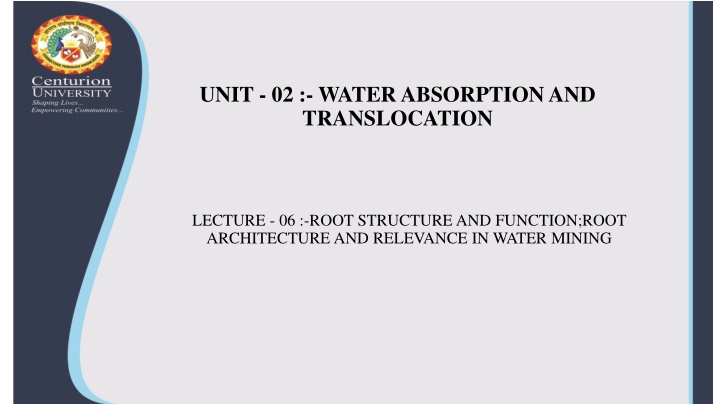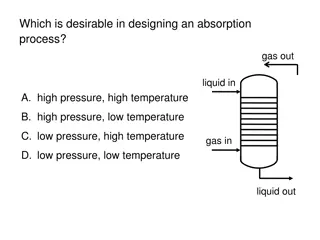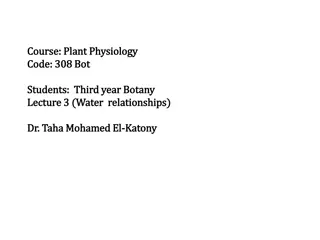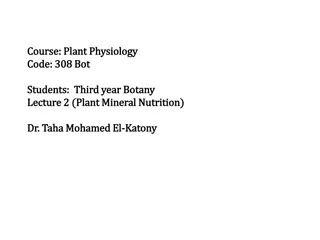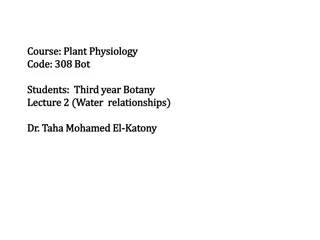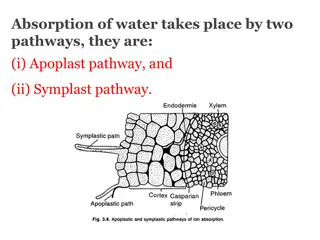UNIT - 02: - WATER ABSORPTION AND TRANSLOCATION
Root architecture plays a vital role in water and nutrient absorption, plant growth, and adaptation to changing climates. Understanding different root systems and their relevance in plant productivity is crucial for maximizing yields and crop resilience.
Download Presentation

Please find below an Image/Link to download the presentation.
The content on the website is provided AS IS for your information and personal use only. It may not be sold, licensed, or shared on other websites without obtaining consent from the author.If you encounter any issues during the download, it is possible that the publisher has removed the file from their server.
You are allowed to download the files provided on this website for personal or commercial use, subject to the condition that they are used lawfully. All files are the property of their respective owners.
The content on the website is provided AS IS for your information and personal use only. It may not be sold, licensed, or shared on other websites without obtaining consent from the author.
E N D
Presentation Transcript
UNIT - 02 :- WATER ABSORPTION AND TRANSLOCATION LECTURE - 06 :-ROOT STRUCTURE AND FUNCTION;ROOT ARCHITECTURE AND RELEVANCE IN WATER MINING
ROOT STRUCTURE Fig; Structure of root
FUNCTIONS OF ROOT SYSTEM Primary functions are anchorage of the plant, absorption of water and dissolved minerals and conduction of these to the stem, and storage of reserve foods. Ecological Function:- They check soil erosion, provide sustenance and also habitat to various organisms. Roots help some of the weak stemmed plants to cling and hence climb up a support.
ROOT ARCHITECTURE Root architecture and root growth are important for exploration of soil for water and nutrients, as the acquisition of these resources drives plant growth. Root system architecture (RSA) refers to the spatial configuration of the root system or the explicit deployment of root axes Plants have three types of root systems: 1.) Taproot, with a main taproot that is larger and grows faster than the branch roots. 2.) Fibrous, with all roots about the same size. 3.) Adventitious, roots that form on any plant part other than the roots.
RELEVANCE OF ROOT ARCHITECTURE Roots are essential for plant productivity and serve a variety of functions, such as water and nutrient uptake, forming symbioses with other microorganisms in the rhizosphere, anchoring the plant to the soil, and acting as storage organs. RSA and the mechanisms of its development will allow manipulation and exploitation of different root traits to improve plants adaptation to changing climates and increase yields for the growing global human population. Root system architecture has a central role in crop plants response to abiotic stresses.
